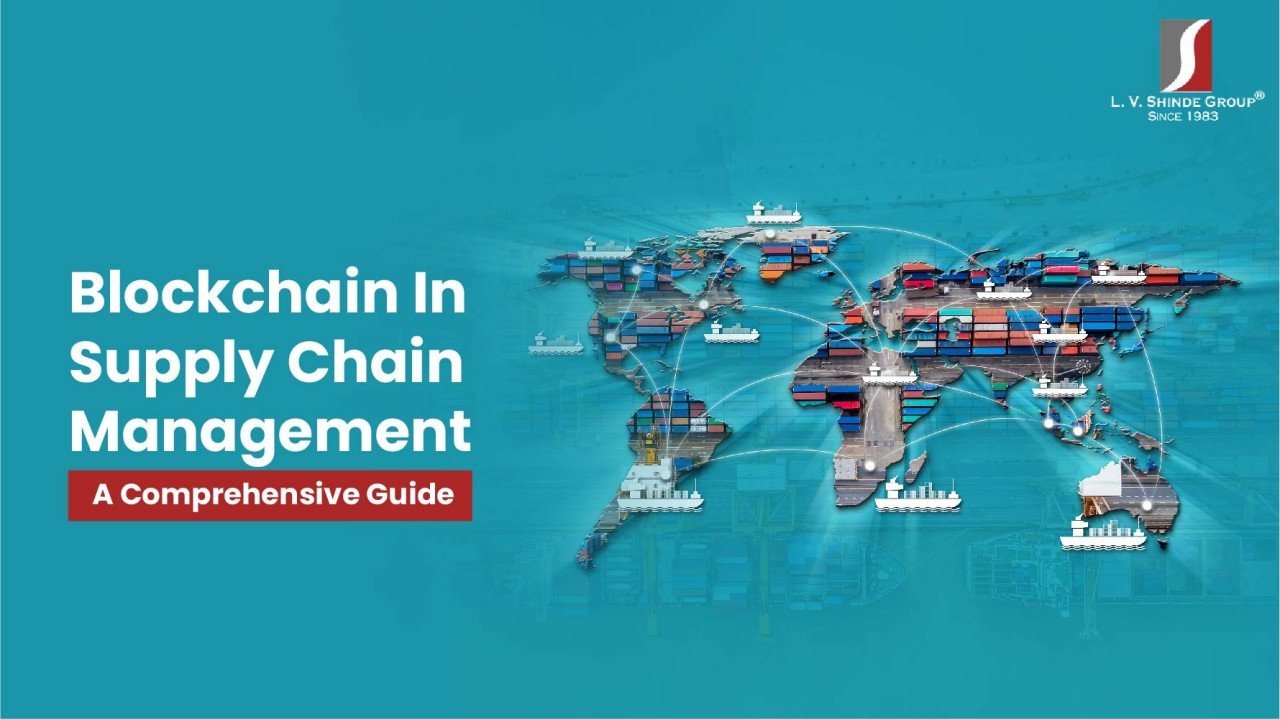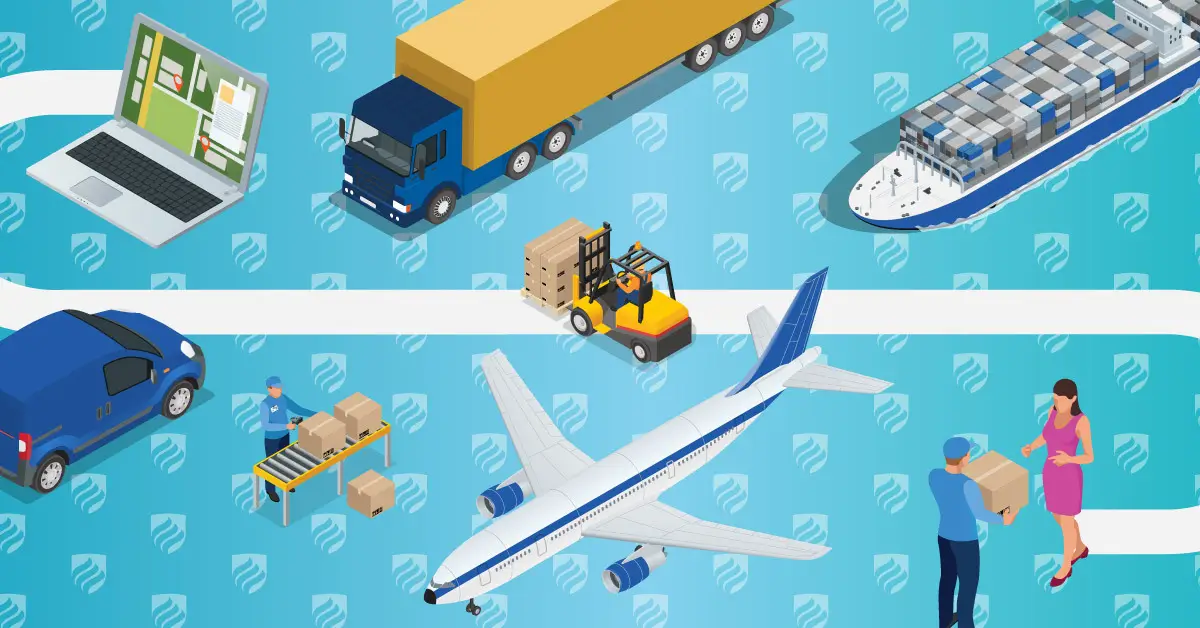Key takeaways
- Moving items from point A to point B is no longer the only aspect of logistics in today’s fast-paced world. It has developed into an intricate system that includes many different tasks meant to maximize supply chain efficiency.
- Thanks to technological breakthroughs like automation and real-time data analytics, businesses may now increase productivity, cut expenses, and streamline their operations.
- Additionally, businesses are putting more emphasis on sustainability by adopting eco-friendly procedures to lessen their influence on the environment.
- With technologies like artificial intelligence (AI), robotics, and the internet of things (IoT) predicted to increase productivity and boost consumer happiness, the future of logistics seems bright.
- Maintaining an advantage over competitors will require adopting innovation and sustainable practices as supply networks continue to change.

Introduction
Businesses must adjust to the evolving supply chain management landscape as the logistics industry continues to grow. Thanks to technological breakthroughs and an increasing focus on sustainability, businesses can now operate more efficiently, cut expenses, and simplify their operations like never before. The future of logistics offers exciting opportunities to improve customer happiness and stay ahead of the competition, from the application of automation and robotics to real-time data analytics. In the ever-changing logistics industry, companies can position themselves for success by adopting innovation and sustainable practices.
The Evolution of Logistics
Over time, logistics has advanced significantly, from basic products transit and storage to a sophisticated system that includes organizing, putting into practice, and managing the effective movement and storage of items, services, and information.
Originally, the main goal of logistics was the transportation of commodities from one location to another. But as globalization and supply chains have grown more intricate, logistics has emerged as a vital component of making sure that businesses run smoothly.
Various reasons, including as technological improvements, shifts in consumer behavior, and the necessity for firms to remain competitive in the global economy, have contributed to the growth of logistics.
These days, logistics encompasses more than just shipping and storage. It includes a broad range of tasks like order processing, demand forecasting, inventory management, and customer support. All of these actions are intended to maximize efficiency and save costs while meeting consumer requests by streamlining the flow of information and goods.
Logistics as a field is evolving along with supply chains. Innovative ideas and cutting-edge technologies are continuously being created to optimize processes and raise supply networks’ overall effectiveness.
Technological Advancements in Supply Chain Management
Supply chain management has changed significantly as a result of technology. The digitalization of logistics has progressed from the introduction of RFID and barcode scanning technologies to the application of advanced analytics and artificial intelligence.
The application of real-time data and analytics is one of the major technological developments in supply chain management. Businesses may now collect and analyze data on a variety of supply chain characteristics in real-time with the use of sensors, GPS tracking, and other monitoring equipment. This enables them to take proactive steps to optimize their operations and make well-informed judgments.
Automating different logistics processes is another significant technical achievement. Automation has greatly increased supply chain management’s accuracy and efficiency. Examples of this include autonomous cars and drones, as well as automated picking and packing systems. Additionally, it has decreased the need for physical labor, which has sped up and decreased the cost of operations.
Additionally, the development of digital platforms and cloud computing has made it possible for supply chain stakeholders to collaborate and communicate more effectively. Businesses now have better visibility and coordination because to the ability to share information, track shipments, and manage inventories in real-time.
All things considered, supply chain management has been transformed by technology breakthroughs, allowing businesses to more effectively provide goods and services, cut expenses, and simplify processes.
Efficiency Through Data Analytics
In the logistics industry, data analytics has become a potent tool that businesses can use to find patterns, trends, and insights that can boost productivity and enhance decision-making.
Businesses can obtain important insights into the effectiveness of their supply chain by gathering and evaluating data from a variety of sources, including sensors, GPS devices, and customer feedback. To increase total efficiency, they can locate bottlenecks, optimize routes, and make judgments based on data.
Additionally, data analytics helps businesses predict demand more precisely, which improves inventory control and lowers the number of stockouts. Businesses can forecast client demand and modify production and distribution in accordance by examining previous data and market patterns.
Additionally, data analytics can assist businesses in determining areas where costs might be optimized. Businesses can find ways to save expenses without sacrificing customer service by examining transportation costs, warehouse utilization, and other variables.
All things considered, data analytics has emerged as a crucial tool for logistics, helping businesses to streamline processes, raise client satisfaction levels, and outperform rivals.
Sustainable Practices in Logistics
In an effort to lessen their influence on the environment and satisfy consumer demand for environmentally friendly products, logistics firms are placing a greater emphasis on sustainability.
The optimization of transportation routes is one of the sustainable strategies in logistics. Companies can lower fuel usage, carbon emissions, and traffic congestion by streamlining their routes and grouping shipments. This lowers expenses, expedites delivery, and benefits the environment.
Using alternate energy and fuels is another sustainable practice. To power their logistical operations, several businesses are switching to renewable energy, biofuels, and electric cars. This lessens reliance on fossil fuels and contributes to the decrease of greenhouse gas emissions.
Green warehouse practices are also being adopted by businesses; these include the use of sustainable packaging materials, recycling initiatives, and energy-efficient lighting. These procedures not only cut down on waste and energy usage, but they also improve customer perception and brand image.
Furthermore, cooperation and collaborations with suppliers, clients, and other stakeholders are essential components of sustainable logistics methods. Companies that collaborate can exchange best practices, streamline supply chain procedures, and support eco-friendly projects all the way up the value chain.
All things considered, environmentally friendly logistics methods also save money, increase productivity, and boost the standing of brands.
Future Trends in Supply Chain Optimization
The logistics industry is always changing, and a number of upcoming trends are anticipated to influence supply chain efficiency.
The use of machine learning (ML) and artificial intelligence (AI) in logistics operations is one of the major trends. Large data sets may be analyzed, trends can be found, and predictions can be made by AI and ML technologies, which helps businesses improve supply chain operations and forecast with greater accuracy.
The growing use of automation and robotics in distribution centers and warehouses is another trend. Robotics technology improvements allow businesses to increase production, increase accuracy, and automate monotonous jobs. This pattern is anticipated to persist as businesses look to cut expenses, boost productivity, and deal with a labor shortage.
Furthermore, supply chain optimization is anticipated to be significantly impacted by the Internet of Things (IoT). Real-time data on the location, state, and status of commodities can be obtained from Internet of Things devices like sensors and RFID tags. This helps businesses make better decisions, increase visibility, and track and monitor their inventories.
In addition, it is anticipated that businesses will continue to embrace digital platforms and technology to optimize their operations, leading to a further digitization of the supply chain. Digital marketplaces, blockchain technology, and cloud computing are just a few of the innovations that will influence supply chain optimization in the future.
All things considered, the future of supply chain optimization is bright, with new ideas and technological developments fostering increased productivity, sustainability, and client happiness.

Conclusion
In summary, considerable technological developments, an increasing emphasis on sustainability, and a focus on customer happiness have all contributed to the evolution of logistics. Logistics has changed dramatically from the simple conveyance of the past to the intricate system of today that involves organizing, carrying out, and managing the flow of goods and information. Technology advancements like automation, artificial intelligence, and real-time data analytics have made it possible for businesses to increase productivity, save expenses, and simplify operations like never before. Businesses can position themselves for success in the fast-paced world of logistics by adopting sustainable practices, streamlining supply chain procedures, and anticipating emerging trends. Exciting opportunities exist for improving customer happiness, increasing efficiency, and making a good difference in the future. on the environment.
FAQ
What does it mean to streamline the supply chain?
The process of streamlining the supply chain involves enhancing and optimizing the movement of products and information from the place of origin to the destination. To improve overall performance, this entails getting rid of any extra stages, cutting bottlenecks, and putting in place effective procedures. Businesses can cut expenses, shorten lead times, increase customer satisfaction, and eventually obtain a competitive advantage in the market by optimizing their supply chains. It involves figuring out how to maximize operational efficiency while meeting consumer requests in a seamless, effective, and efficient manner throughout the entire supply chain process.
How do you streamline logistics operations?
The process of optimizing the flow of goods and information along the supply chain through the implementation of innovative technologies and efficient procedures is known as streamlining logistics operations. This entails working with stakeholders to improve communication and coordination, automating tasks to decrease manual labor and boost accuracy, and using real-time data analytics to pinpoint areas that need improvement. Companies may reduce expenses, boost productivity, and eventually provide goods and services more successfully to satisfy consumer demands in a cutthroat market by optimizing their logistics operations. To stay ahead in the fast-paced world of logistics, one must always look for methods to improve operating procedures and optimize performance.
What are the 7 C’s of logistics?
The fundamental elements required for efficient supply chain management are referred to as the “seven C’s” of logistics. These elements consist of:
1. Communication: To guarantee that all parties involved in the flow of goods and information along the supply chain are aware and in agreement, effective communication is essential in logistics.
2. Coordination: To guarantee efficient operations and prompt product delivery, coordination is essential across a range of activities, including transportation and warehousing.
3. Control: Being in charge of transportation, inventory, and other logistics procedures enables businesses to streamline their operations and react fast to unforeseen circumstances.
4. Compliance: To avoid fines and retain a good reputation, logistics companies must adhere to standards and regulations, such as safety protocols and environmental legislation.
5. Customer service: In order to foster loyalty and confidence, logistics must prioritize meeting customer needs through prompt delivery, accurate information, and attentive support.
6. Cost: Keeping costs under control is essential to sustaining profitability and market competitiveness, whether through smart sourcing or effective route planning.
7. Continuity: To reduce downtime and preserve a dependable supply chain, logistics must ensure that activities continue even in the face of unanticipated occurrences or disruptions.
Businesses may optimize their supply chain management procedures, boost productivity, and provide outstanding customer service by concentrating on these seven C’s of logistics.

What are the pillars of supply chain excellence?
The principles of supply chain excellence comprise a range of fundamental elements that are necessary to attain maximum efficiency and performance in logistics processes. These pillars provide as the cornerstone for creating a robust supply chain that is able to change with the needs of its clients and the market.
1. Planning and organizing: Aligning logistical activities with business goals requires a clear and comprehensive supply chain plan. Effective planning includes defining critical performance metrics, assigning resources, and setting goals.
2. Cooperation and Partnerships: Strong relationships with suppliers, customers, and other stakeholders are necessary to guarantee the seamless flow of goods and information across the supply chain. By encouraging mutual trust, communication, and support, cooperation increases consumer happiness and efficiency.
3. Technology and Innovation: Improving supply chain visibility, agility, and decision-making requires embracing cutting-edge technologies like AI, ML, IoT, and automation. Continuous improvement is made possible by innovation, which helps businesses stay ahead of the curve and adjust to changing market trends.
4. Risk Management and Resilience: To minimize disruptions and preserve operational continuity, it is essential to identify possible risks, create backup plans, and strengthen the supply chain’s resilience. Companies that use proactive risk management techniques are better able to foresee problems and handle unanticipated situations.
5. Sustainability and Corporate Social Responsibility: In order to satisfy the needs of today’s ethically concerned consumers, supply chain operations must incorporate sustainable practices, environmental stewardship, and ethical standards. Adopting CSR programs improves customer loyalty and brand reputation while also lessening the environmental effect.
By concentrating on these supply chain excellence pillars, businesses can remain competitive in the constantly changing logistics market while streamlining processes, increasing efficiency, and providing value to consumers.
Hope this article was helpful for more checkout our precious blog post by clicking here

